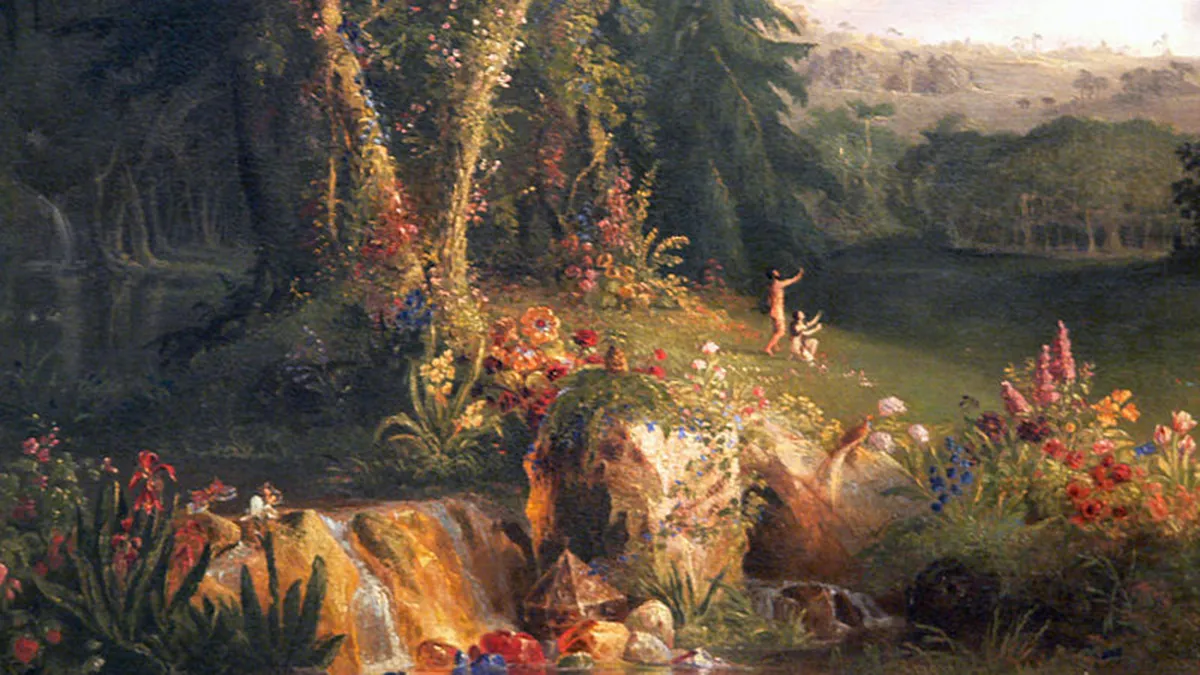When misfortune strikes Ned Flanders, The Simpsons’ quintessential Charlie Church, he asks, in Job-like despair: why me, Lord? I’ve done everything the Bible says, even the stuff that contradicts the other stuff! Ned’s confusion is what awaits anyone who holds to the peculiar doctrine of Biblical literalism: that is, the belief that the Bible is literally, factually true.
Such an idea is relatively modern, first appearing in the 18th century. Some scholars see it as, in fact, a product of the scientific revolution itself. Certainly, even from the earliest days of Christianity, Church fathers were quite clear that much of the Bible was not meant to be understood literally. Indeed, doing so, they said, diminished its true meaning.
Augustine of Hippo particularly singled out the Book of Genesis as a work composed largely of metaphor. Modern psychologists like Jordan Peterson agree. The Biblical narrative of Paradise and the Fall, says Peterson, provides a profound account of the nature of Being.
Peterson particularly links the story of Eden to our experience of the innocence of childhood giving way to the realisation of adult responsibility.
Just like childhood, many people over the years have been keen to rediscover the Paradise of Eden. So, where was it? The Bible gives apparently detailed directions.
The Garden of Eden as described in scripture was like a heaven on Earth – so it stands to reason that people would be eager to find it. In the Book of Genesis, it’s said to sit at the meeting point of four rivers, and over the centuries, many have speculated as to where this might’ve been, offering up theories about the Garden of Eden’s location including the Persian Gulf, Ethiopia, and even Jackson, Missouri.
And a river went out of Eden to water the garden; and from thence it was parted, and became four heads. The name of the first is Pishon; that is it which compasseth the whole land of Havilah, where there is gold; and the gold of that land is good; there is bdellium and the onyx stone. And the name of the second river is Gihon; the same is it that compasseth the whole land of Cush. And the name of the third river is Tigris; that is it which goeth toward the east of Asshur. And the fourth river is the Euphrates.
An obvious candidate is the “Fertile Crescent”, of the Tigris and Euphrates rivers in Mesopotamia. Not only does much of the Biblical action take place in this very region, it’s also the birthplace of some of the earliest human civilisations.
Still, there’s been much debate over the precise location of the Garden of Eden within the region.
The area with the strongest argument may be that of the Persian Gulf, somewhere around southern Iraq, Kuwait, and Iran, where the Tigris and Euphrates rivers meet the sea.
Some even argue the garden was located in Armenia, as the Armenian highlands dip into Mesopotamia from the north.
But is it more likely an ancestral memory of the most likely birthplace of humanity itself, in Africa? The name Cush is usually taken to refer to Ethiopia, just a bit south and across the Red Sea from the Biblical lands.
Going even further south, though, a more likely candidate for the birthplace of metaphorical Adams and Eves emerges.
In 2019, it was widely reported that the Garden of Eden, symbolic or not, would have been in Botswana hundreds of thousands of years ago, according to a recently released study published in Nature.
The study compared the mitochondrial DNA of modern humans in southern Africa to analysis of modern linguistics, historic climate patterns, and the geographic distributions of local populations to argue that the birthplace of mankind was likely south of the Zambezi River in northern Botswana.
There, humanity would have thrived for tens of thousands of years before eventually being forced to migrate due to climate issues, mirroring the biblical tale of Genesis on a grand scale.
Then there are the wackier ideas.
According to the Church of Jesus Christ of Latter-day Saints, the Mormons, Eden was in America, naturally. Supposedly in the vicinity of Independence, Missouri. When Adam and Eve were banished from the garden, they upped stakes all the way to Daviess County, Missouri.
The church’s members would attempt to settle in the area in the 1830s. Tensions with other settlers eventually pushed them out of the state, but not before Joseph Smith declared the land to be the future gathering place of the righteous at the end of the world.
And despite little geographical or textual evidence supporting the theory, the LDS church has nonetheless accumulated vast swathes of land in the area – around 3,000 acres.
All That’s Interesting
Other groups have located the Garden everywhere from Bedford, England, to the Apalachicola River, Florida.
John Calvin, somewhat sensibly, perhaps, simply shrugged and decided the whole exercise was a waste of time.
Because, of course, the Great Flood would have so altered the Earth’s geography that it wiped away the identifying waterways listed in Genesis.









